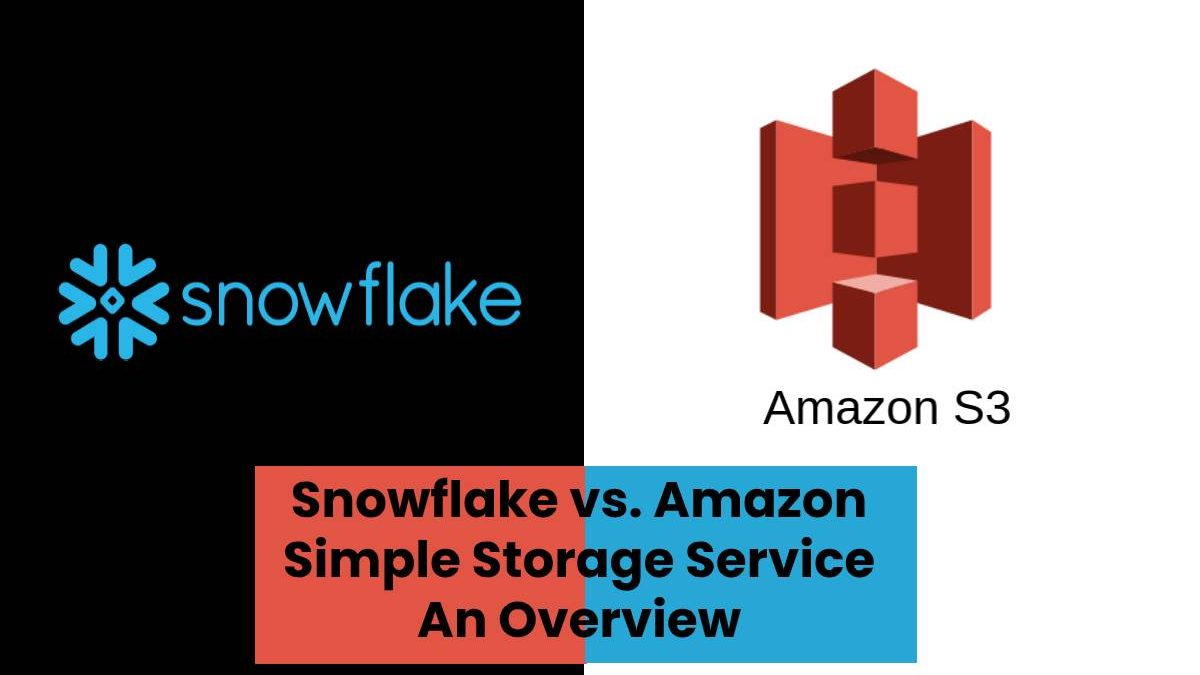Snowflake vs Amazon Simple Storage Service
This post will focus on various aspects of Snowflake and Amazon Simple Storage Services S3, two popular data engineering scenarios today. But before diving deep into the various aspects of Snowflake and S3, it is necessary to have an overview of the two.
Table of Contents
Snowflake and Amazon S3 – A First Impression
Computing and storage are two separate entities on Snowflake with the costs being almost the same. This was not so on S3 previously but Amazon has addressed the issue by introducing Redshirt Spectrum. It allows data to be directly queried on S3 even though the user experience is not as smooth and seamless as Snowflake.
Snowflake
Snowflake is a cloud-based data warehousing solution that has features optimized for the present generation data management scenario. There are several benefits of Snowflake.
- Snowflake has separate computing and storage facilities. Hence users can scale up or down in either of them as per need, paying only for the quantum of resources used.
- A wide range of cloud vendors is supported by the Snowflake architecture thus providing users the advantage of using the same tools to analyze data from various cloud vendors.
- Both structured and unstructured data can be natively loaded to Snowflake, a facility that is not available on established database platforms like Oracle. Snowflake supports JSON, Avro, XML, AND Parquet data.
- Snowflake is a high-performing data warehousing solution and multiple users can execute multiple intricate queries simultaneously without facing any drop in performance.
- Snowflake automatically runs different activities, from the encoding of columns to auto-scaling computing capabilities without the need to define indexes or manually cluster data. For very large volumes of data though, clustering keys of Snowflake have to be used to co-locate table data.
So how do Snowflake and S3 measure up?
Amazon S3
Amazon S3 or Simple Storage Service is a component of the suite of data services called Amazon Web Services (AWS) that is fully managed by Amazon. It is optimized for users who need the option either to use the minimal and basic storage options for small data pipelines or scale up to tens of terabytes of S3 data storage for data engineering scenarios.
There are many benefits to Amazon S3.
- Amazon S3 provides different access levels. For example, for loading low-cost storage sections, S3 Storage Class Analysis is executed through the S3 Lifecycle policy. Payment is done proportionate to usage.
- Amazon S3 offers unmatched data durability and scalability. New projects can be started immediately without additional investments in hardware and software to meet the fresh requirements for data management infrastructure. Since S3 automatically stores all objects over multiple systems, data durability is assured.
- Amazon S3 provides data storage and protection capabilities through the AWS Partner Network which is the biggest amongst technology and cloud service vendors. Data security too is assured as encryption and other management access tools ensure protection from unauthorized access to data.
- Critical features of Amazon S3 include data protection, cost affordability, access management, and data replication. The replication process can be carried out within or outside the region. Further, S3 can manage billions of objects through Batch Operations.
The next question now is how does a comparison between Snowflake and S3 pan out in database management?
Comparison of Snowflake and S3 Data Warehouse
Snowflake Computing has a service called Snowflake Elastic Data which organizations use to store and analyze data through cloud-based software and hardware from where data is stored in Amazon S3. Even though both are powerful with exclusive features, there are certain points where the two differ.
Ecosystems
In the Amazon ecosystem, Redshift integrates with a range of AWS services like Kinesis Data Firehose, SageMaker, EMR, Glue, DynamoDB, Athena, Database Migration Service (DMS), Schema Conversion Tools (SCT), and CloudWatch.
Snowflake does not have equivalent integrations and users find it difficult to use tools like Kinesis, Glue, and Athena. Snowflake though offers its own set of integration points like IBM Cognos, Informatica, Power BI, Qlik, Apache Spark, Tableau, and others.
It might seem here that S3 has an edge but Snowflake too has almost pulled up alongside too.
Data Security
Snowflake S3 offer a heightened level of security that negates any vulnerabilities and access to sensitive information.
Amazon S3 has strict access management, cluster security groups, Virtual Private Cloud (VPC), cluster encryption, and load data encryption.
Snowflake too provides industry-leading security features such as network site access, account/user authentication, object security, data security, and security validations.
It is difficult to say which platform has more fail-safe attributes. Both are on par in this regard.
Pricing
Snowflake and S3 have different pricing models.
Redshift charges pert-hour-per-node covering both computing and data storage. Price can be arrived at by the size of the cluster and the number of hours worked per month.
Snowflake bills at hour granularity for every virtual data warehouse that depends largely on usage patterns.
For on-demand pricing, however, Redshift is 1.9 times cheaper than Snowflake on a 1-year Reserved Instance (RI).
Before selecting the right platform consider all these aspects and take adequate time to carry out extensive research.

